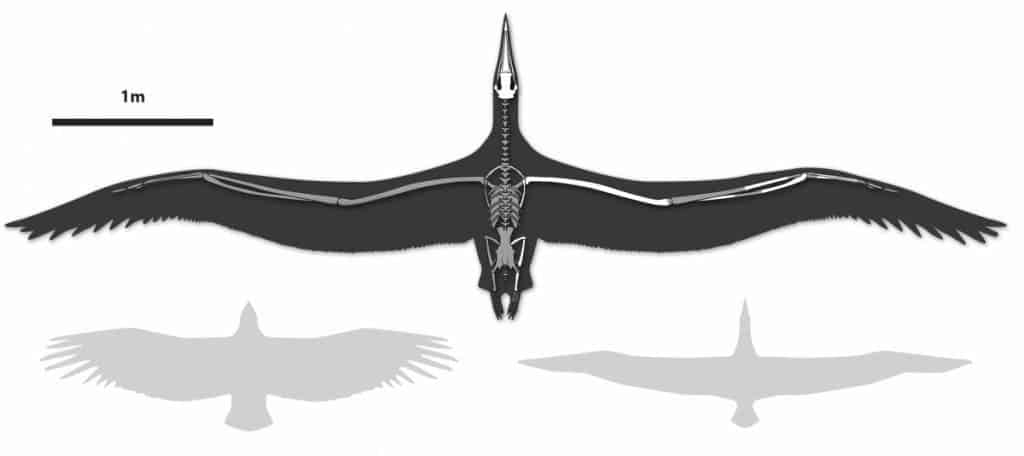
Scientists have identified the fossilized remains of what they believe to be the the largest flying bird. The species, now long extinct, had an estimated wingspan of 7-8 meters (20-24 feet) – twice as big as the royal albatross, today’s largest flying bird.
Interestingly enough, the bird was initially unearthed in 1983 near Charleston, South Carolina, when construction workers were developing a (then) new airport terminal. The specimen was so big they had to dig it out with a backhoe.
“The upper wing bone alone was longer than my arm,” said author Dan Ksepka of the National Evolutionary Synthesis Center in Durham, North Carolina.
However, it was only now that the bird was officially cataloged and analyzed. Named ‘Pelagornis sandersi‘ in honor of retired Charleston Museum curator Albert Sanders, who led the fossil’s excavation, the bird lived some 25-28 million years ago, in the Oligocene – long after the dinosaurs went extinct, and way before humans entered the scene.
Paleontologists are absolutely certain that the bird flew – it had huge, hollow bones which supported its enormous wings, but it was probably very awkward on the land, with its stumpy small legs. The curious thing is that the discovered specimen surpasses some mathematical models of the maximum body size possible for flying birds. The only thing which is still not clear is how exactly the bird managed to take off from the ground. Judging by the fact that the albatross can fly over 10000 miles in one go, it seems plausible that this bird also flew for impressive amounts of time, across vast distances.
In order to figure out this mystery, Ksepka inputted the data into a specialized software, analyzing the flight performance as a function of mass, wingspan and wing shape. P. sandersi was probably too big to take off simply by flapping its wings and thrusting itself in the air. More likely, it ran downhill into a headwind, or took advantage of air gusts, much like a glider.
But after it got up in the air, its long, slender wings probably became incredibly effective. It was probably able to glide for miles and miles, without having to ever flap its wings.
“That’s important in the ocean, where food is patchy,” said Ksepka, who is now Curator of Science at the Bruce Museum in Greenwich Connecticut.
Researchers hope to find more specimens and shed more light on this remarkable family of huge birds.
Journal Reference:
Daniel T. Ksepka. Flight performance of the largest volant bird. PNAS, July 7, 2014 DOI: 10.1073/pnas.1320297111







